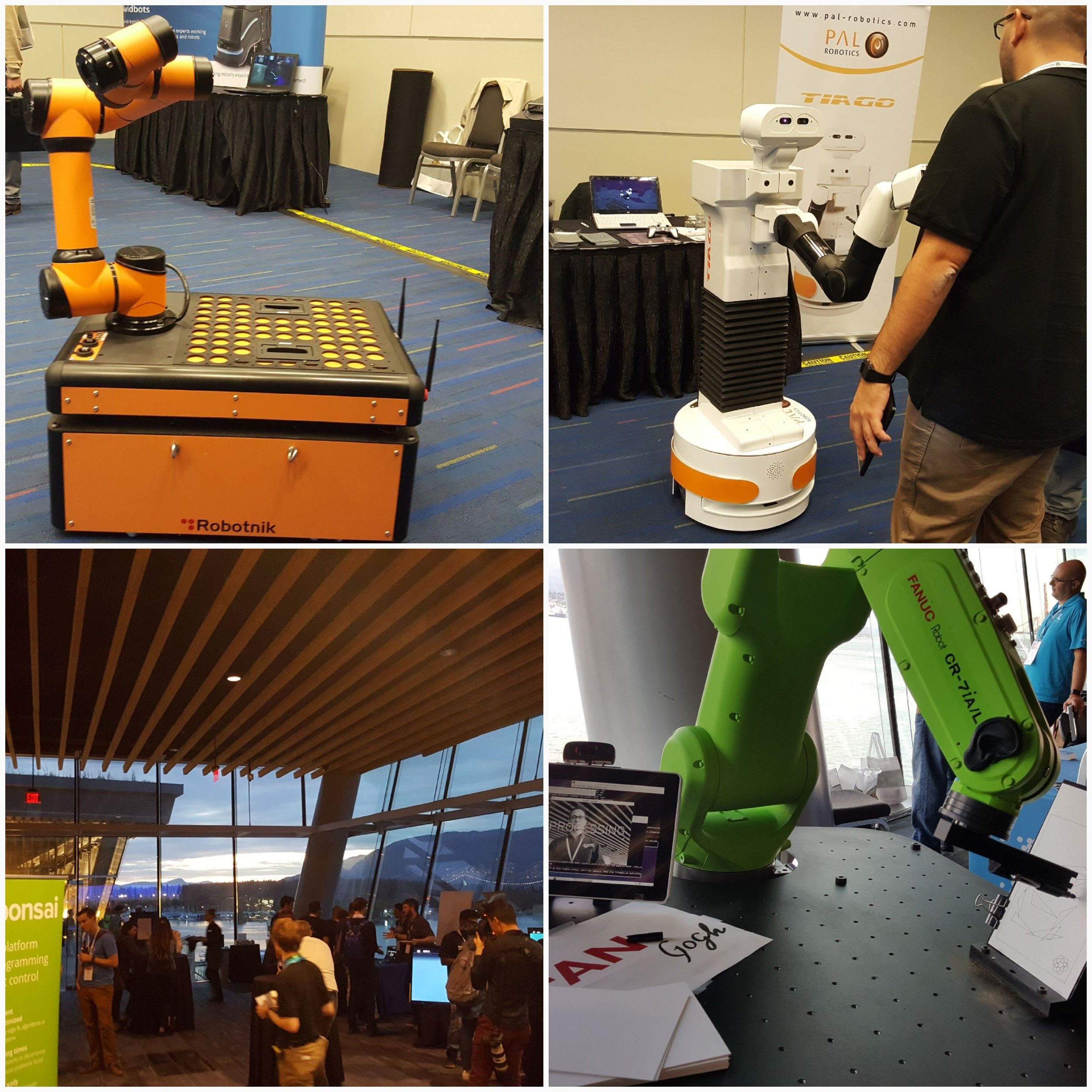ROS-Industrial ROSCon 2017 Highlights
/ROSCon 2017 was recently held in Vancouver, Canada, and has become a marquee event for all things ROS over the years. Hosted by OSRF, this event is a key place to hear the latest developments within the ROS community, while enabling richer networking and collaboration related to robotics, path planning and, really, any area where ROS can be leveraged, be it in industry, hobbies, education, humanitarian services, or life sciences.
This was also one of the rare times where ROS-Industrial’s global team was able to get together face-to-face, both as ROSConn participants, and also to collaborate and set forth plans relative to the future of ROS-Industrial. Fraunhofer IPA supported the booth and the sponsorship for ROS-Industrial for this event. The booth was well-trafficked, and each Consortium— Americas, Europe, and Asia-Pacific— contributed to making the booth a success, including a Scan-N-Plan demonstration on a UR3.
Robotic Blending UR3 Demonstration
The ROS-I team supported three different talks. Gijs van der Hoorn supported the talk “How ROS Cares for Quality,” which is part of the EU2020 project ROSIN. Levi Armstrong presented “Robotic Path Planning for Geometry-Constrained Processes” and, finally, Mirko Bordignon, Min Ling Chan, and Matt Robinson presented an update on the ROS-Industrial Consortium and its success at leveraging private and public funding.
ROS-I members left to right: Joseph Polden, ARTC-A*Star; Levi Armstrong, SwRI; Matt Robinson, SwRI; Min Ling Chan, ARTC-A*Star; Gijs van der Hoorn, TU Delft; and Mirko Bordignon, Fraunofer IPA.
ROS-I members left to right: Name, company; Levi Armstrong, SwRI; Matt Robinson, SwRI; Min Ling Chan, ARTC-A*Star; Gijs van der Hoorn, TU Delft; and Mirko Bordignon, Fraunofer IPA.
ROS Developments
ROSCon provides a pulse for the trends shaping the ROS development community in coming months and years. There was a lot of buzz about ROS2 with presentations on related middleware, components, and novel applications. Some ROS-Industrial team members who attended the event provided observations on this and other topics of interest.
Levi Armstrong, SwRI ROS-I Technical Lead: There was a lot of interest in ROS2, which we have not used on the projects we have developed historically. However, I do think it would be good to begin doing some work with ROS2, mainly to advance capabilities for our clients and open the door to new areas of work. There are opportunities to weave in the ROS2 work for a new driver for the Motoman running a ROS2 node directly on the controller.
Matt Robinson, SwRI ROS-I Consortium Americas Program Manager:
- We heard sincere and significant interest from the start-up community in ROS-Industrial and understanding how to engage the Consortium. There was particular interest in a vehicle or means to join the Consortium with less of an up-front cash consideration for start-ups.In parallel, there is an expectation or desire for a more "industrial" feel relative to documentation and response to issues/requests.
- We also heard increased interest in Smart Factory/Industry 4.0-type applications requiring movement of information from engineering and order-to-delivery systems to have systems "take action" or to enable dynamic optimization.
- Regarding the significant activity in ROS2, it will be meaningful for ROS-I teams to consider test cases, or pilots and actively engage in ROS2.
Gijs van der Hoorn, TU Delft ROS-Industrial Project Manager:
- ROSCon underscored the importance of accelerating our work with ROS2, both technically and with policy/roadmap/planning.
- People still struggle to understand what is “industrial” about ROS-I and,by extension, why they should be interested in ROS-I.
- The ROS community has -- even more than in previous years -- become a consumer-first community; the number of (structural) contributors is very, very low. And even though there are quite a few companies that use ROS, their contributions to the community are limited. Even for larger entities, they really only touch what they directly need, at that instant, for their own purposes. There needs to be a means to encourage and develop the companies that drive the excitement around ROS & ROS-I to demonstrate the value of being a proper community member.
The ROS-Industrial team also held a working leadership group session the following day. Topics covered for growth are the means to encourage effective community engagement and contribution, particularly among OEMs. For functionality to really take off and meet the needs of ROS-I stakeholders, OEM support and engagement is critical. Finally, ROS2 and broader industrial hardware integration and strategy was discussed. Migration of communication tools such as the retiring of the ROS-I/SwRI Google group was also settled with a migration to Discourse slated for January 2018. Follow-on communications are in the works relative to the output of this meeting and follow-on working sessions to continue to improve ROS-I and the vision supporting its growth.
ROSCon was a valuable opportunity to learn about the community that makes ROS unique, the startups that are innovating in the commercial marketplace, the leadership of OSRF, and other ROS stakeholders seeking to continue the upward trajectory that the robotics community is already on, and we are excited that ROS-I has become a key part of that.





